
Imago
Credits: Imagn

Imago
Credits: Imagn
Before Larry Bird and Magic Johnson burst onto the scene in the early 80s, the NBA was in rough shape. The late ’70s saw the league’s popularity plummet, despite a brief flicker of hope from the ABA merger. Amid the chaos, one man quietly plotted a comeback: David Stern. Long before we knew him as a gentle but strict commissioner, Stern was the league’s general counsel. Now, depending on who you ask, his legacy might be debated, but there’s no denying his genius in turning a struggling league into a global powerhouse through savvy economics and administrative vision.
Watch What’s Trending Now!
Similarly, the WNBA is experiencing a popularity boom currently. The talent is undeniable. The audience is here. Partnerships have expanded. But this momentum is both an opportunity and a test. The question is no longer whether the league has potential. It’s whether the league has the leadership to realize it. So, the question looms: does Cathy Engelbert have what it takes to be the WNBA’s David Stern?
ADVERTISEMENT
How did David Stern transform the NBA?
Over the last two years, with new and exciting talent like Caitlin Clark shifting from the NCAA to the pros, the WNBA has undergone massive changes, opening the league to popular and economic growth. Viewership across networks like ABC, ESPN, and CBS has surged by 186% compared to 2023, and the average game attendance has soared past 9,800 fans. This reminds us of a time long forgotten, back when Stern took over from Larry O’Brien as commissioner.
The Bird vs Magic rivalry was still in its initial stages, and would-be superstar Michael Jordan was just entering the league. Stern had his work cut out for him, and to his credit? He delivered when it seemed like no one else could. The former NBA commissioner marketed the league through the lens of players, rivalries, and narratives. This strategy played really well with the Jordan-Nike brand deal and helped establish MJ as a cultural icon.
Top Stories
NFL Suspends Chargers’ Denzel Perryman for Two Games Over Cowboys Incident
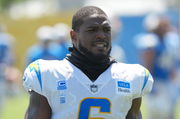
Clark Hunt Admits Being Pressured to Leave Arrowhead After Chiefs Offered $2.4B Proposal

American Gymnastics Coaches Tied to Training Olympians Face Suspensions

Steelers Confirm $45M Punishment for DK Metcalf After NFL Suspended WR for 2-Games

Sean McDermott Confirms if Bills Will Sign a QB Amid Josh Allen’s Injury Concerns
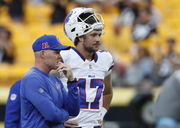
FOX Earns Rare Moment of Respect as NFL Honors NASCAR Legend Live on Air

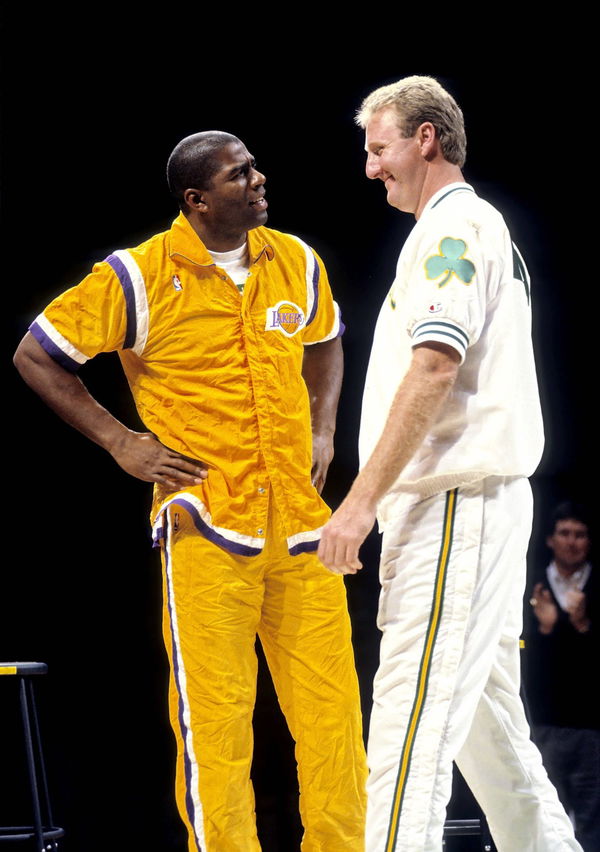
Imago
Boston, Massachusetts, U.S – Boston Celtics Larry Bird and Los Angeles Lakers Magic Johnson at Bird s Retirement NBA Basketball Herren USA 1993 – Larry Bird and Magic Johnson PUBLICATIONxINxGERxSUIxAUTxONLY – ZUMArry
Boston Massachusetts u s Boston Celtics Larry Bird and Los Angeles Lakers Magic Johnson AT Bird s Retirement NBA Basketball men USA 1993 Larry Bird and Magic Johnson PUBLICATIONxINxGERxSUIxAUTxONLY ZUMArry
David Stern recognised that the scope and reach of the league needed to increase drastically, as only then could they maximize profits and engagement. His first step? Shifting from CBS to NBC in 1990. After years of stale production, declining ratings, and controversies like tape delays, Stern shifted to NBC so that he could implement his vision for the league. And it worked! Ratings jumped from 4.7 to 5.0 in the first two years of the deal, and people were definitely appreciating the new direction for the league.
ADVERTISEMENT
Not only that, he shifted focus to international markets, making global expansion one of the league’s top priorities. Pre-season games happened in Tokyo, France, and London, and foreign stars like Toni Kukoc, Andrei Kirilenko, etc, were capitalized on.
ADVERTISEMENT
Under David Stern’s direction, the league exploded in annual revenue from $165 million in 1984 to $5.5 billion by 2014, a whopping 3233% increase over his tenure! While he faced controversies with his stars, team owners, and the player union, none of that stopped him. That leads us to the question: Is Cathy Engelbert ready to do the same with the WNBA?
What has Cathy Engelbert gotten right so far?
To understand where Engelbert stands, we first need to take a look at the circumstances she has been presented with. She took over as the league’s commissioner in 2019, right before the onslaught of COVID-19. One of her first major acts was to organize a ‘Wubble’, a pandemic-safe season in Bradenton, Florida, which kept the league afloat during difficult times.
ADVERTISEMENT
On the business side of things, she knows what works–she was the first female CEO of Deloitte, after all! She played into digital expansion, preferring online streaming services such as Amazon Prime over cable networks, and negotiated a deal that brought national broadcasts up to 160+ games annually.
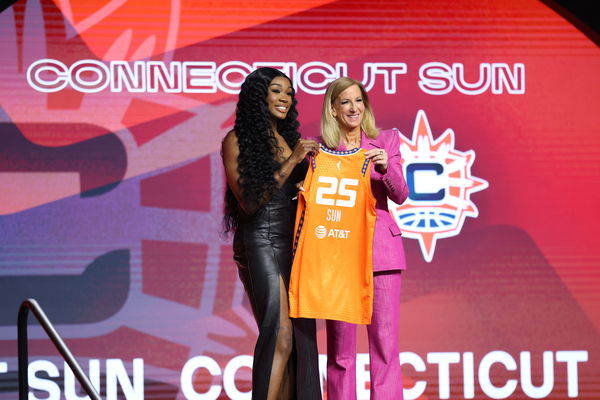
Imago
Apr 14, 2025; New York, New York, USA; Aneesah Morrow poses with WNBA commissioner Cathy Engelbert after being selected with the number seven overall pick to the Connecticut Sun in the 2025 WNBA Draft at The Shed at Hudson Yards. Mandatory Credit: Vincent Carchietta-Imagn Images
On top of all that, Cathy Engelbert has been busy planting the seeds for the league’s future, spearheading a four-team expansion plan that’s already brought us the Golden State Valkyries. It’s a bold move signaling that the WNBA is not just growing, but growing with intention. Then there’s the slow but significant shift toward charter flights, a long-overdue step toward treating players like the elite athletes they are. No more MVPs crammed into middle seats after back-to-backs.
ADVERTISEMENT
But are Engelbert’s actions enough? The WNBA is finally picking up momentum, but it’s still miles behind its male counterpart when it comes to revenue, merchandise sales, and overall brand value. To truly bridge that gap, the commissioner can’t afford to tread lightly.
Fortunately, she’s holding a winning hand. The 2024 and 2025 draft classes have injected the league with a fresh wave of talent and, just as importantly, a flood of compelling narratives carried over from college. Leading the charge? Caitlin Clark vs. Angel Reese. Their showdowns have the entire basketball world watching, and more often than not, walking away entertained. But this headline-making rivalry has also proven to be a double-edged sword for Engelbert, sparking one of the biggest controversies of her leadership so far.
ADVERTISEMENT
The dark side of the WNBA
While there are flashes of David Stern in Cathy Engelbert’s approach, the controversies under her watch have complicated that comparison. From a narrative standpoint, she totally misjudged the extent of the Angel Reese-Caitlin Clark rivalry and the effect that it was having on the league.
The thing is, Clark and Reese have history. They met in the NCAA championship, words were exchanged, and a standard was set for their future matchups. Does that remind you of anyone? Well, according to Engelbert, “It is a little of that Bird-Magic moment if you recall from 1979, when those two rookies came in from a big college rivalry, one white, one black,” and there’s seemingly no apathy or hatred involved. However, that’s simply not the case.

Imago
May 17, 2025; Indianapolis, Indiana, USA; Indiana Fever guard Caitlin Clark (22) fouls Chicago Sky forward Angel Reese (5) in the second half at Gainbridge Fieldhouse. Mandatory Credit: Trevor Ruszkowski-Imagn Images
Both sides in this rivalry are quite influential and command a great fan following. And as expected, some of their fans are quite obsessive and hateful, which has led to a great amount of suffering for both Clark and Reese. Racial slurs, misogyny, harassment–you name it, their fans have probably done it during a game. Engelbert was called out for her views on the situation by players like Breanna Stewart, Sheryl Swoopes, and Chelsea Gray, and ended up issuing a formal apology for the same.
ADVERTISEMENT
Then, there’s the scheduling fiasco. The condensed schedule, devised in part to accommodate the Paris Olympics, has led to repeated back-to-backs and a spike in injuries. Dallas Wings forward Satou Sabally, among others, was openly critical of the league’s decision to cram high-intensity games into impossible timelines. “I think this is a conversation that could also be important for the next (Collective Bargaining Agreement). Cathy added a lot of games, and for us as players, recovery is so important,” Sabally said. “We put our bodies on the line every single time. We had nine games in 18 days. That’s not really responsible for a commissioner.”
For a league already fighting the perception that it underpays and undervalues its athletes, that’s a damning indictment. Honestly, Engelbert’s responses to player welfare are quite underwhelming, and it is her job to make the situation better, to make the league better for both the owners and the players. However, with the ‘prioritization clause’ that she advocated for, players are only suffering and losing additional sources of income!
ADVERTISEMENT
Yet, her biggest test is going to be whether she can capitalize on the billion-dollar opportunity sitting right under her nose in the same way that David Stern did, or if she’ll let the chance fizzle out.
The ‘Caitlin Clark effect’ vs the ‘Jordan effect’
Would it be a stretch to compare Caitlin Clark’s impact on the W to what Jordan did for the NBA in the 90s? Even if it is, there are definitely enough similarities for Cathy Engelbert to catch onto and utilize during the development of the W. Putting aside the focus on Clark’s rivalry with Angel Reese, the Indiana Fever star has been pivotal in the growth of the WNBA over the last couple of years, the same way that MJ was.
Jordan’s effect on basketball was more like a slow-peaking crescendo, but for CC, the process has been a lot quicker due to the social media-dominated era we live in. Last year, Clark accounted for over 26% of all WNBA economic activity, which is projected to reach $1B at the end of this season. After her arrival, tickets, jerseys, and merchandise sales skyrocketed by over 601%! League attendance surged by 48%, and Fever home games averaged more than 17,000 fans, a lot more than their male counterparts.
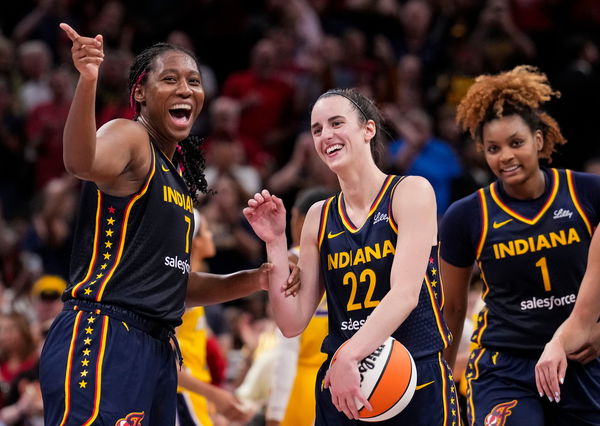
Imago
Indiana Fever forward Aliyah Boston (7) celebrates with Indiana Fever guard Caitlin Clark (22) altering recording a triple-double Wednesday, Sept. 4, 2024, during the game at Gainbridge Fieldhouse in Indianapolis. The Indiana Fever defeated the Los Angeles Sparks, 93-86.
On a more personal level, Clark raked in a huge 8-year, $28M deal with Nike, drawing direct parallels to Jordan’s inspirational journey with the company. It genuinely seems like history is bound to repeat itself with CC, and that we’re seeing the rise of a new legend, and a contender for the greatest of all time.
But here’s the thing: stars do not shine in a vacuum. They need backing and institutional support. They need what Stern gave Jordan: an open runway and a marketing blitz. And this is where Engelbert is underdelivering. Because the Caitlin Clark effect has been largely organic, driven by college carryover and fan-created hype. The league is riding the wave, not creating it.
To successfully capitalize on this opportunity, Cathy Engelbert would have to pivot to star-driven, player-first growth and market Caitlin Clark as an individual. Think back to the ‘Be Like Mike’ campaigns, the slogans, and the image that Michael Jordan commanded. If the WNBA commissioner manages to pull this transition off, then there’s no doubt that we will have found the W’s David Stern. However, there has to be solid initiative from Engelbert’s end, and a lot of learning to be done before that can successfully happen.
ADVERTISEMENT
ADVERTISEMENT
ADVERTISEMENT

